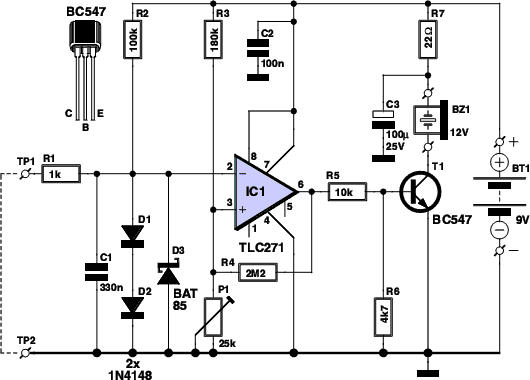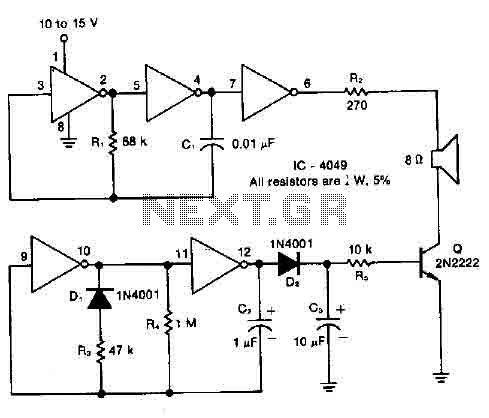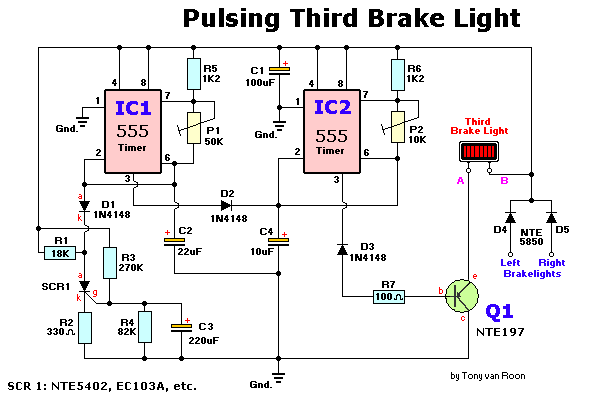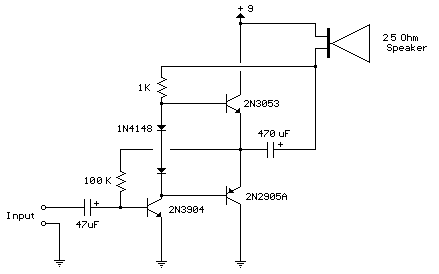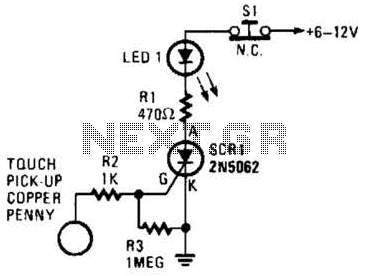
A Transistor Based Single Zone Alarm circuit
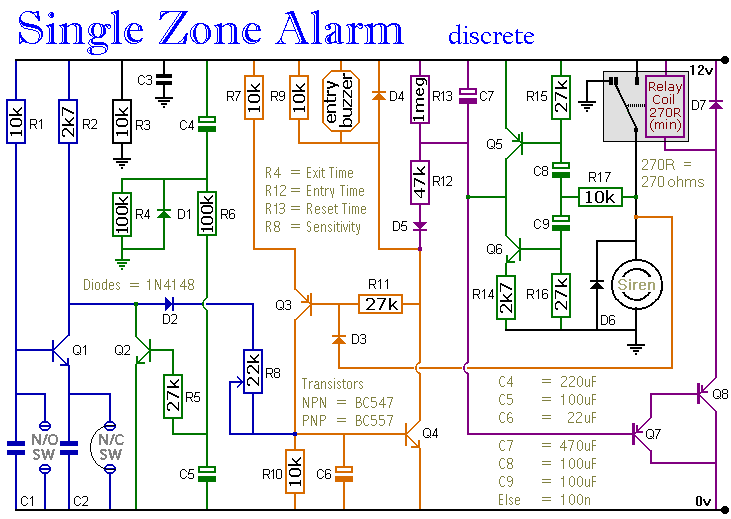
The circuit includes automatic exit and entry delays, a timed bell cut-off, and a system reset feature. It accommodates both normally-open and normally-closed switches, making it compatible with standard input devices such as pressure mats, magnetic reed contacts, foil tape, passive infrared sensors (PIRs), and inertia sensors.
This electronic circuit is designed to enhance security and automation within various applications. The automatic exit and entry delays provide a buffer period for users to enter or exit a designated area without triggering an alarm. This is particularly useful in alarm systems where users need time to disarm the system upon entry or exit.
The timed bell cut-off feature allows for a predetermined duration for an alarm or bell to sound, after which it will automatically deactivate. This prevents unnecessary noise and potential disturbances while ensuring that alerts are given for a sufficient time to notify individuals of an event.
The system reset capability allows for a quick return to the original state after an alarm has been triggered or a user has interacted with the system. This is essential for maintaining the functionality of the circuit without requiring manual intervention every time an event occurs.
The provision for normally-open and normally-closed switches enables flexibility in design. Normally-open switches are typically used to initiate an action only when activated, while normally-closed switches can provide a continuous signal until interrupted. This adaptability allows the circuit to be tailored to specific applications, enhancing its usability.
The compatibility with various input devices, including pressure mats, magnetic reed contacts, foil tape, PIRs, and inertia sensors, broadens the scope of applications. Pressure mats can detect foot traffic, magnetic reed contacts can sense door or window openings, foil tape can provide a perimeter security solution, while PIRs and inertia sensors are effective for motion detection.
Overall, this circuit is versatile and can be implemented in a variety of security and automation systems, providing essential features that enhance user experience and system reliability.The circuit features automatic Exit and Entry delays, timed Bell Cut-off and System Reset. It has provision for normally-open and normally-closed switches and will suit the usual input devices (Pressure Mats, Magnetic Reed contacts, Foil Tape, PIRs and Inertia Sensors).. 🔗 External reference
This electronic circuit is designed to enhance security and automation within various applications. The automatic exit and entry delays provide a buffer period for users to enter or exit a designated area without triggering an alarm. This is particularly useful in alarm systems where users need time to disarm the system upon entry or exit.
The timed bell cut-off feature allows for a predetermined duration for an alarm or bell to sound, after which it will automatically deactivate. This prevents unnecessary noise and potential disturbances while ensuring that alerts are given for a sufficient time to notify individuals of an event.
The system reset capability allows for a quick return to the original state after an alarm has been triggered or a user has interacted with the system. This is essential for maintaining the functionality of the circuit without requiring manual intervention every time an event occurs.
The provision for normally-open and normally-closed switches enables flexibility in design. Normally-open switches are typically used to initiate an action only when activated, while normally-closed switches can provide a continuous signal until interrupted. This adaptability allows the circuit to be tailored to specific applications, enhancing its usability.
The compatibility with various input devices, including pressure mats, magnetic reed contacts, foil tape, PIRs, and inertia sensors, broadens the scope of applications. Pressure mats can detect foot traffic, magnetic reed contacts can sense door or window openings, foil tape can provide a perimeter security solution, while PIRs and inertia sensors are effective for motion detection.
Overall, this circuit is versatile and can be implemented in a variety of security and automation systems, providing essential features that enhance user experience and system reliability.The circuit features automatic Exit and Entry delays, timed Bell Cut-off and System Reset. It has provision for normally-open and normally-closed switches and will suit the usual input devices (Pressure Mats, Magnetic Reed contacts, Foil Tape, PIRs and Inertia Sensors).. 🔗 External reference
